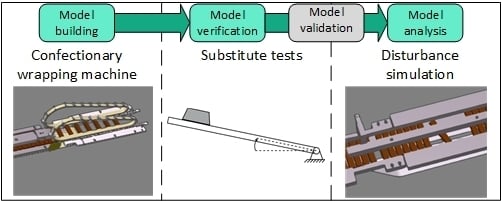Disturbance Simulation in the Packaging Process of Confectionary Using Virtual Commissioning
Abstract
Share and Cite
Wolf, J.; Carsch, S.; Troll, C.; Majschak, J.-P. Disturbance Simulation in the Packaging Process of Confectionary Using Virtual Commissioning. Machines 2020, 8, 19. https://doi.org/10.3390/machines8020019
Wolf J, Carsch S, Troll C, Majschak J-P. Disturbance Simulation in the Packaging Process of Confectionary Using Virtual Commissioning. Machines. 2020; 8(2):19. https://doi.org/10.3390/machines8020019
Chicago/Turabian StyleWolf, Johanna, Sebastian Carsch, Clemens Troll, and Jens-Peter Majschak. 2020. "Disturbance Simulation in the Packaging Process of Confectionary Using Virtual Commissioning" Machines 8, no. 2: 19. https://doi.org/10.3390/machines8020019
APA StyleWolf, J., Carsch, S., Troll, C., & Majschak, J.-P. (2020). Disturbance Simulation in the Packaging Process of Confectionary Using Virtual Commissioning. Machines, 8(2), 19. https://doi.org/10.3390/machines8020019





